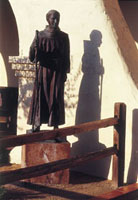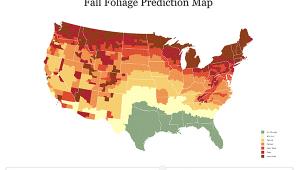California Missions
Finding And Photographing The History Of California
In the fourth grade every kid in California learns about Father Junípero (say, who-NIP-ero) Serra of Mallorca, Spain. A tough little man who was destined to become both the founder of California and someday, a saint. I don't know if it's the influence of those long-ago lessons or my grown-up love of history and tradition but I haven't lost one bit of my excitement over the California Missions. Today 21 of the original 23 missions are still in existence. Two, La Purísima Concepción and San Pedro y San Pablo de Bicuñer, both located on the Califor-nia side of the Colorado River near Yuma, Arizona, were destroyed in an Indian uprising in 1781 and abandoned. The construction of the mission chain lasted a scant 54 years but many of today's most prosperous cities grew up around them. This was no accident. The padres, when possible, chose locations that offered fertile land, good water, and mild climate. Most are still functioning parishes, three are California State Parks and four are still administered by the Franciscan order. Each mission has its own personality and will present its own photographic challenges but I'll share some tips for getting the most out of a shoot. |
|||
Many of the missions have regularly scheduled tours and I suggest that you take them to find features that inspire you and then come back to these on your own. All of the missions I have visited are very tolerant of photographers but remember to be respectful. Like much of the architecture of the 16th and 17th century rooms tend to be surprisingly small so bring wide angle lenses. I rely heavily on my 17-35mm zoom and if I'm working with my 4x5 the 90mm and 65mm lenses are always within reach. Be sure and shoot horizontal and vertical compositions when at all possible. This gives a photo editor more options should you hope to publish your photos. The lighting in the chapels and other interior areas is usually quite dim so a tripod and a remote release are necessities. Some of the images shot for this article required exposures of more than 10 minutes with ISO 100 film. Architectural subjects are usually best taken with a view camera, which is my first choice, or Perspective Control (PC) lenses, my second choice. But there are a couple of tricks that will let you use standard optics and still get exciting results. One technique is to use as long a lens as you can and get as far back as the building and its surroundings allow. By distancing your camera from the subject you lessen the upward angle needed to minimize, if not completely eliminate, convergence of vertical lines. The second approach is just the opposite. Use the shortest focal length you have and get as close as you can to the subject. Rather than eliminating convergence this will emphasize it. Remember the adage, "If you don't like convergence it's called distortion and if you do, it's called perspective." The missions are rich in warm colors and textures. You will find that rough plaster, adobe brick and terra cotta tile are plentiful and will photograph best with a film that is kind to such colors and textures. Therefore, slow films with fine grain and high acutance are generally the best choice. Although an argument can be made for using faster, grainier films to enhance the feeling of antiquity. It's your call. Many photographers prefer the more accurate color of a tungsten-balanced transparency film for interior shots lighted by artificial light but often I find the warmer color caste of daylight films to be rather pleasant. Again it's a matter of personal preference. With color negative film it's almost a moot point as most labs will correct the color balance anyway. |
|||
On your first encounter with a California mission you will probably be overwhelmed by the architecture and spend most of your time concentrating on that aspect but don't overlook the small details. They often have displays and demonstrations of mission life and many artifacts that date to the 18th and 19th centuries so a macro lens or zoom lens with a macro mode is a handy tool. When photographing displays of old paintings, richly colored vestments worn by the early padres, or ancient manuscripts try to use available light rather than flash. If accurate color is important use a tungsten-balanced film or a color correction filter when subjects are illuminated by artificial lighting. Many photographers would claim that their hands-down favorite would have to be the jewel of the mission chain, Santa Barbara. Others would choose San Juan Capistrano for its charm and the romance of the swallow legend. La Purísima, just outside Lompoc, is a state park and offers a wealth of photo opportunities. Especially at those times of the year when the docents assume the persona of mission inhabitants and demonstrate tasks such as weaving and spinning, candle making, or hide tanning. Then, of course, there is mission San Luis Obispo at the heart, figuratively and literally, of the community of San Luis Obispo. Still an active church, this parish with a mission, as they call themselves, is the center of much of the religious and secular life of the town. But my personal favorite and most special place to shoot, or if the light's bad just hang out and get caught up in the centuries of history that have washed over it, is San Antonio de Padua. This little charmer is off the beaten path, really off, and it's not uncommon to spend a morning shooting or exploring and not see another person except the Franciscans who run the place. It too is a working parish and is one of the four remaining missions that are administered by the Franciscan Order. It's surrounded by a military reservation and is quite a distance from any population centers so it remains quite unspoiled and in my estimation, a photographer/history buff's dream. |
|||
The Mission Locator (South To North) · San Diego de Alcalá; first mission, founded 1769; located five miles east of Interstate 5 in Mission Valley, off State Highway 8. · San Luis Rey de Francia; 18th mission, founded 1798; located in San Luis Rey, between Interstate 5 and Interstate 15, five miles east of Oceanside, on State Highway 76. · San Juan Capistrano; seventh mission, founded 1776; located in San Juan Capistrano on Ortega Highway two and one half blocks off Interstate 5. · San Gabriel Arcángel; fourth mission, founded 1771; located in San Gabriel on Mission Drive., about nine miles east of Los Angeles. · San Fernando Rey de España; 17th mission, founded 1797; located one and one half miles west of San Fernando, off Interstate 5, on Mission Blvd. · San Buenaventura; ninth mission, founded 1782; located in Ventura on Main Street, east of Highway 101. · Santa Bárbara; 10th mission, founded 1786; located in Santa Barbara at the end of Laguna Street. · Santa Inés; 19th mission, founded 1804; located in Solvang on State Highway 246. · La Purisima Concepción; 11th mission, founded 1787; located five miles east of the city of Lompoc. · San Luis Obispo de Tolosa; fifth mission, founded 1772; located in San Luis Obispo at the corner of Chorro and Monterey streets. · San Miguel Arcángel; 16th mission, founded 1797; located in San Miguel on old Highway 101, nine miles north of Paso Robles. · San Antonio de Padua; third mission, founded 1771; located off Highway 101, 23 miles southwest of King City. · Nuestra Señora de la Soledad; 13th mission, founded 1791; located off Highway 101 three miles south and one mile west of Soledad. · San Carlos Borromeo de Carmelo; second mission, founded 1770; located south of Carmel just off State Highway 1 on Rio Road. · San Juan Bautista; 15th mission, founded 1797; located in San Juan Bautista, 17 miles north of Salinas. · Santa Cruz; 12th mission founded 1791; located in Santa Cruz, at Emmet and School Streets. · Santa Clara de Asis; eighth mission, founded 1777; located in Santa Clara on The Alameda. · San José; 14th mission, founded 1797, located off Interstate 680, 15 miles northeast of San Jose. · San Francisco de Asis; sixth mission, founded 1776; located in San Francisco on Dolores Street, between 16th and 17th Streets. · San Rafael Archángel; 20th mission, founded 1817; located in San Rafael at 5th and A Streets, 15 miles north of San Francisco. · San Francisco de Solano; 21st mission, founded 1823; located in Sonoma on state Highway 12. References Hama (Bubble level and other accessories) Dot Line Corp. Great web site on the California
Missions with links to individual missions and other interesting sites. Comprehensive book on the missions
and the mission period. |
- Log in or register to post comments





















































